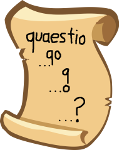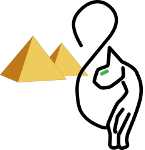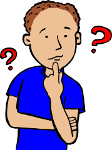Q & A

| No. of Players: | 3+ |
| Type of Game: | written |
| What you need: | pen and paper |
Goal
To guess the questions for a given set of answers.
How to play
The gamemaster writes a numbered series of questions on one piece of paper, and the corresponding answers on another piece of paper. The piece of paper with answers is copied and handed out to the players. The players must then write down what they think the original questions were. Once completed, they hand their guesses back to the gamemaster who reads them out loud, along with the original questions. The results are often interesting.
Examples
| Answer: | Lockjaw |
| Player's question: | Which Bond villain did Richard Kiel play? |
| Original question: | What is another name for tetanus? |
| Answer: | Persistence of Memory |
| Player's question: | What plagues people with perfect recall? |
| Original question: | What is the title of Salvador Dali's painting of the melting watches? |
| Answer: | Barrister |
| Player's question: | What is the handrail at the side of a staircase called? |
| Original question: | The term 'lawyer' is an umbrella term for 'solicitor' and what? |
| Answer: | Venus |
| Player's question: | Who is the Roman goddess of love? |
| Original question: | What planet orbits the sun every 225 days? |
| Answer: | The Edge |
| Player's question: | What is the name of the Toronto music station on FM dial 102.1? |
| Original question: | Who is the lead guitarist in the rock band U2? |
| Answer: | Turkey |
| Player's question: | What's the main course for Thanksgiving? |
| Original question: | Where are the ruins of Troy? |
Did you know?
The historical origins of the question mark is (pardon the pun) a bit of a question mark.

One theory says that scholars in the Middle Ages would write the Latin word quaestio at the end of a sentence to show it was a question. Since this was rather cumbersome to write out each time, it was eventually abbreviated. First to qo, then to q on top of o, and finally into the "?" symbol we know today. This is much like how our own cursive signature, which we once perfected in third grade, eventually morphed into the squiggly lines we now use as adults. But alas, there is little evidence to back up this theory.

A competing theory, also unsubstantiated, argues that the curve of the question mark traces back to the ancient Egyptians. Since Egyptians were famed for their worship of cats, it makes sense they would have been inspired by the similar shape of an inquisitive cat's tail.

In the end, perhaps it's appropriate this question remains a mystery. What do you think?

